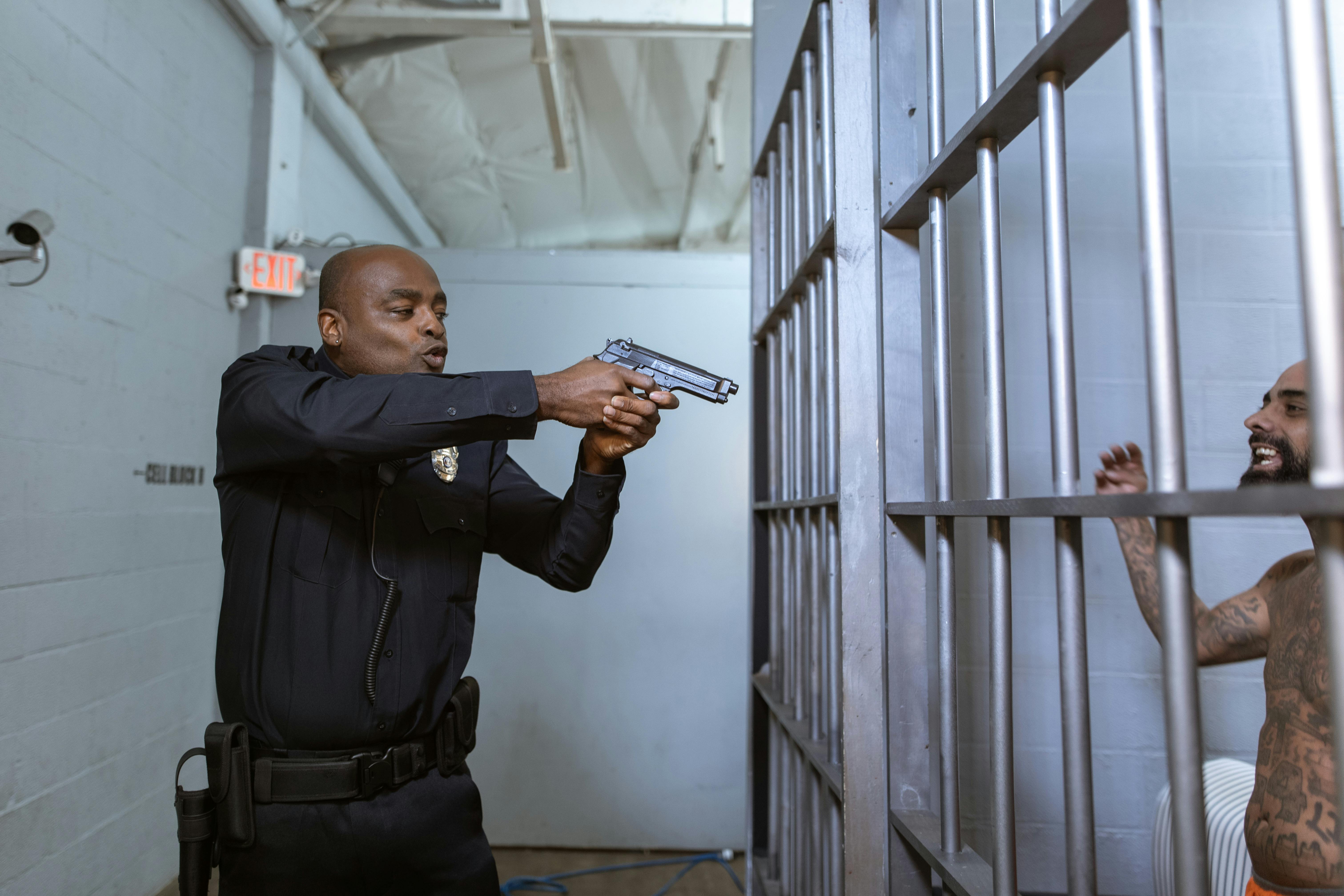Besides rocks, one of the most basic weapons throughout human history in most cultures has been the long wooden stick. This makes sense since sticks were always available in the woods or could be easily made. Asian martial arts turned the long wooden staff into an art form, as many styles of martial arts include the long staff in their systems. Some styles even have traditional weapon forms or kata with the long staff. Some martial arts systems train with weapons such as the staff through practical techniques alone without the use of established forms.
Unlike many martial arts weapons like swords, knives, kamas and sais which are short ranged, staves are long ranged weapons with superior range. This allows the user to attack and defend from a distance that can be frustrating from the point of view of an opponent with a close range weapon. Long range weapons are also useful for keeping multiple opponents out of range. Of course, long weapons, like the baton, cannot be easily concealed like close range weapons, so they can be cumbersome to carry.
One of the most popular martial arts weapons in Japanese karate styles is the bo. Even today, the bo is often the first weapon taught in karate schools and is the most common weapon seen in tournaments. The bo staff comes in different variations. There are heavy bo poles that resemble thick poles that are considered more traditional and there are lighter versions that taper at both ends. There are also multi-sided bo sticks, such as octagonal ones, but these are much less common than the usual round and circular versions.
Although there are one-handed strikes, most bo techniques involve both hands holding the weapon. Various strikes and blocks can be performed with either end of the bo, as well as the sides and middle. Bo users take advantage of the entire weapon, as techniques can be executed with any part of the bo. For most techniques involving the bo, the user holds the staff near the middle with both ends sticking out equally. Traditionally, the main hand (farthest from the body) has been the right hand.
Contemporary weapon form competitions have seen the bo evolve, where competitors now wear extremely lightweight bo and some even have reflective finishes that give a more striking visual appearance when the user performs a bo form. Unlike traditional bo forms, contemporary creative open bo forms involve turns and even more complex throws. Some of the modern forms of bo seen on competition circuits are not considered by some martial artists to be true weapon forms, as some competitors place too much emphasis on the baton-like spinning action rather than actual combat techniques. It could well be a matter of personal taste. This is why in most major open martial arts tournaments, the weapons divisions are divided into traditional and creative.
Chinese kung fu styles also use the long staff, although there are some differences in techniques compared to Japanese karate styles. Instead of holding the weapon in the middle most of the time like a bo is held, Chinese staves are usually held near one end, which has the effect of lengthening the weapon even further. Traditionally, the leading hand is the left hand, and the right hand holds the lower end of the staff. However, there are techniques that involve switching sides and using the bottom end to hit as well. In addition to strikes executed while holding the weapon in both hands, there are more one-handed techniques with Chinese sticks than with Japanese bo sticks. Like their empty hand kung fu forms, Chinese staff forms have more circular swing techniques than in Japanese karate styles.
Contemporary forms of wushu use a much lighter weapon than traditional kung fu staff forms. Wushu stylists also use staves or clubs that are made from a unique white wax wood from trees grown only in China. Canes made from this type of wood are not precisely made like Japanese bo. Wushu staves naturally taper with a thicker bottom and thinner top. White wax wood is extremely durable, as users of this type of Chinese staff perform techniques that involve smashing the entire weapon against the ground with full force.
The Korean kuk sul won also has a long staff in its system and the techniques used are like a mix of Chinese and Japanese movements. Although all styles of martial arts that use weapons have more complex and possibly more impressive weapons, the long staff is still a favorite of many martial artists.



